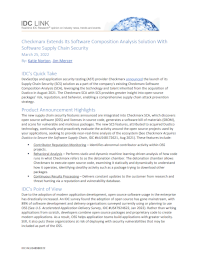5 Ways Create Password Hash

Creating a password hash is a crucial step in securing user passwords. A password hash is a string of characters that represents the password, but is not the password itself. Instead, it’s a unique digital fingerprint that can be used to verify the password without actually storing the password. Here are five ways to create a password hash, each with its own strengths and weaknesses.
1. Bcrypt Hashing
Bcrypt is a popular password hashing algorithm that is widely used in web applications. It’s designed to be slow, which may seem counterintuitive, but this slowness is actually a security feature. The slower the hashing process, the more computationally expensive it becomes for attackers to use brute-force methods to guess the password.
Bcrypt automatically generates a random salt for each password, which helps to prevent rainbow table attacks. Here’s a simple example of how to use bcrypt in Python:
import bcrypt
def hash_password(password):
salt = bcrypt.gensalt()
hashed_password = bcrypt.hashpw(password.encode('utf-8'), salt)
return hashed_password
def check_password(password, hashed_password):
return bcrypt.checkpw(password.encode('utf-8'), hashed_password)
# Example usage
password = "mysecretpassword"
hashed_password = hash_password(password)
print(f"Hashed Password: {hashed_password}")
is_valid = check_password(password, hashed_password)
print(f"Is Password Valid? {is_valid}")
2. Argon2 Hashing
Argon2 is another highly recommended password hashing algorithm that won the Password Hashing Competition in 2015. It’s designed to be highly resistant to GPU-based attacks, which are common in password cracking. Argon2 provides a high level of security and flexibility, allowing developers to tune its parameters based on their specific needs.
Here’s an example of using Argon2 in Python:
from argon2 import PasswordHasher
def hash_password(password):
ph = PasswordHasher()
hashed_password = ph.hash(password)
return hashed_password
def check_password(password, hashed_password):
ph = PasswordHasher()
try:
return ph.verify(hashed_password, password)
except:
return False
# Example usage
password = "mysecretpassword"
hashed_password = hash_password(password)
print(f"Hashed Password: {hashed_password}")
is_valid = check_password(password, hashed_password)
print(f"Is Password Valid? {is_valid}")
3. PBKDF2 Hashing
PBKDF2 (Password-Based Key Derivation Function 2) is a widely used password hashing algorithm that is part of the RSA Laboratories’ Public-Key Cryptography Standards (PKCS) series. It’s designed to be slow and uses a pseudorandom function along with a salt to derive a key from a password.
While PBKDF2 is still secure, it’s considered less secure than bcrypt or Argon2, especially against GPU-based attacks. However, it’s still a viable option when used with a sufficient number of iterations and a random salt.
Here’s a Python example using PBKDF2 with HMAC and SHA256:
import hashlib
import os
import binascii
def hash_password(password):
salt = os.urandom(32)
key = hashlib.pbkdf2_hmac('sha256', password.encode('utf-8'), salt, 100000)
return binascii.hexlify(salt + key)
def check_password(password, hashed_password):
hashed_password = binascii.unhexlify(hashed_password)
salt = hashed_password[:32]
key = hashed_password[32:]
new_key = hashlib.pbkdf2_hmac('sha256', password.encode('utf-8'), salt, 100000)
return new_key == key
# Example usage
password = "mysecretpassword"
hashed_password = hash_password(password)
print(f"Hashed Password: {hashed_password}")
is_valid = check_password(password, hashed_password)
print(f"Is Password Valid? {is_valid}")
4. Scrypt Hashing
Scrypt is a password-based key derivation function that is designed to be highly resistant to brute-force attacks using GPUs or ASICs. It uses a significant amount of memory, which makes it more secure against such attacks.
Scrypt is considered to be more secure than PBKDF2 but less flexible than Argon2. Here’s an example of using Scrypt in Python:
import hashlib
import os
import binascii
def hash_password(password):
salt = os.urandom(32)
key = hashlib.scrypt(password.encode('utf-8'), salt=salt, n=214, r=8, p=1, dklen=32)
return binascii.hexlify(salt + key)
def check_password(password, hashed_password):
hashed_password = binascii.unhexlify(hashed_password)
salt = hashed_password[:32]
key = hashed_password[32:]
new_key = hashlib.scrypt(password.encode('utf-8'), salt=salt, n=214, r=8, p=1, dklen=32)
return new_key == key
# Example usage
password = "mysecretpassword"
hashed_password = hash_password(password)
print(f"Hashed Password: {hashed_password}")
is_valid = check_password(password, hashed_password)
print(f"Is Password Valid? {is_valid}")
5. SHA-256 Hashing with Salt
SHA-256 is a cryptographic hash function that produces a 256-bit hash value. While not recommended for password hashing due to its speed and vulnerability to brute-force attacks, it can be used with a salt to provide a basic level of security.
However, using SHA-256 (or any other fast hash function) for password storage is not recommended due to its susceptibility to rainbow table attacks and brute-force attacks. Always use a password hashing algorithm designed for password storage, such as bcrypt, Argon2, or PBKDF2.
import hashlib
import os
import binascii
def hash_password(password):
salt = os.urandom(32)
hashed_password = hashlib.sha256(salt + password.encode('utf-8')).digest()
return binascii.hexlify(salt + hashed_password)
def check_password(password, hashed_password):
hashed_password = binascii.unhexlify(hashed_password)
salt = hashed_password[:32]
key = hashed_password[32:]
new_key = hashlib.sha256(salt + password.encode('utf-8')).digest()
return new_key == key
# Example usage
password = "mysecretpassword"
hashed_password = hash_password(password)
print(f"Hashed Password: {hashed_password}")
is_valid = check_password(password, hashed_password)
print(f"Is Password Valid? {is_valid}")
In conclusion, when it comes to creating password hashes, security should be the top priority. Among the methods discussed, bcrypt and Argon2 are highly recommended due to their robust security features and resistance to various types of attacks. Always choose a method that is designed specifically for password hashing and consider factors like computational overhead, memory usage, and the type of attacks it is designed to mitigate.



